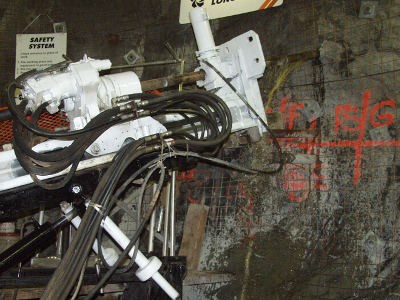The mining supply and service sector in northern Ontario is more of an economic powerhouse than previously suspected, according to a new study showing 500 companies generate $5.6 billion in annual sales and employ 23,000.
This exceeds all previous totals for revenue, numbers and staffing as used by government and industry advocates alike, which had presumed related employment levels to be no higher than 15,000 across the north.
In comparison, Ontario's total mining revenue reached $9.6 billion in 2008. Direct employment in mining and exploration, however, is estimated at 10,000, meaning the supply and service sector in the north is now more than double that total.
"It is bigger than we thought, and it means this sector wields more influence than we expected," Dick DeStefano, executive director of the Sudbury Area Mining Supply and Service Association (SAMSSA), said.
Conducted by the Ottawa-based Doyletech Corporation, the study was initiated last August with the goal of examining the importance of the mining service and supply sector in the north, one of the most concentrated of its kind in the world, and its growth opportunities.
Funding to the tune of $205,000 was provided by various project partners including SAMSSA, the Ministry of Northern Development, Mines and Forestry (MNDMF), Ontario North Economic Development Corp. (ONEDC) and FedNor.
DeStefano says he's excited about the sector's economic impact, which reinforces SAMSSA's long-held belief that its value had traditionally been underestimated.
Previous estimates had also pegged the number of companies in this sector at 400, though the new number only includes those companies which do 50 per cent or more of their business with the mining industry.
More companies with a heavy mining focus were analyzed but did not fit this exact criteria.
This revelation represents opportunities for growth not only for the north but also for SAMSSA, which includes some 110 companies and organizations among its membership.
In the study, Greater Sudbury is identified as having the largest concentration of mining supply and service firms of all cities in the north, with $3.94 billion in annual sales and roughly 13,800 in direct employment.
This is roughly five times that of North Bay, which is said to have $770 million in annual sales with 2,990 related jobs. While Timmins has a smaller dollar value of annual sales than North Bay with $590 million, it has more related employment with 4,600 jobs.
Thunder Bay, with $350 million in annual sales and 1,610 jobs, comes in at the bottom of the four regional centres identified in the study.
Regions with much smaller numbers, such as Sault Ste. Marie, Elliot Lake and Marathon, were folded into one of the four other areas.
Further analysis indicates that even during the recession, the majority of companies were operating at 75 per cent of their capacity. At peak, the mining supply and service sector provides an estimated $1.38 billion in annual salaries, excluding benefits.
The heart of the information used in the 142-page study was developed by Doyletech, which over the last five months conducted face-to-face interviews with 150 companies. Three seven-person focus groups were also assembled from throughout northern Ontario to discuss the results.
Specific segments of the northern Ontario supply industry were identified across a variety of sectors, including mining machinery and equipment; materials and fabrication services; parts, sub-systems and maintenance repairs; as well as public and private sector organizations and institutions. Also included were those in the sector of mining complete solutions, which involves feasibility, design-build, development and operation services.
The new totals for the north represent just the first phase of the study's findings, which also examined the current status of exports and international market preferences, along with the associated risks and rewards inherent in those markets.
These results and other facets of the study, such as the sector's plans for the future and options for strategic go-forward, are feeding into discussions being held among the participants and partners in an effort to determine the best long-term solutions to maintain and grow the sector.
These will continue over the coming months to help determine what elements of the study are feasible, which recommendations are more suitable, and what solutions can be implemented.
For more information, visit:
www.samssa.ca
www.mndm.gov.on.ca
www.iion.ca
www.ic.gc.ca/fednor
